Urs Fischer: Wave
In this video, Urs Fischer elaborates on the creative process behind his public installation Wave, at Place Vendôme, Paris.
June 24, 2020
Catalyzed by the exhibition Crushed, Cast, Constructed: Sculpture by John Chamberlain, Urs Fischer, and Charles Ray, Alice Godwin examines the legacy and development of a Surrealist ethos in selected works from three contemporary sculptors.

Installation view, Crushed, Cast, Constructed: Sculpture by John Chamberlain, Urs Fischer, and Charles Ray, Gagosian, Grosvenor Hill, London, June 15–July 31, 2020. Artwork, left to right: © Urs Fischer; © 2020 Fairweather & Fairweather LTD/Artists Rights Society (ARS), New York
Installation view, Crushed, Cast, Constructed: Sculpture by John Chamberlain, Urs Fischer, and Charles Ray, Gagosian, Grosvenor Hill, London, June 15–July 31, 2020. Artwork, left to right: © Urs Fischer; © 2020 Fairweather & Fairweather LTD/Artists Rights Society (ARS), New York
Something curious happens when an unremarkable object from everyday life manifests in the gallery. Sigmund Freud pinpointed this peculiar sensation in his essay “The Uncanny,” published in 1919, in which he described the feeling of finding something faintly familiar and yet strangely alien at the same time. By this moment of the early twentieth century, the notion that “ordinary” things could become works of art had already permeated artists’ imaginations, most notoriously through the Dada movement and Marcel Duchamp’s iconic readymades.
Following World War I, Surrealism took up the mantle of “the uncanny” and defined its manifesto as “psychic automatism in its pure state,”1 attempting to unlock the “superior reality” of the subconscious mind.2 For the Surrealists’ de facto leader, André Breton, mundane things possessed a certain power that when brought into dialogue with one another expressed a disagreeable kind of beauty, as did “the encounter of a sewing machine with an umbrella on a dissection table.”3
Each of the sculptures featured in the exhibition Crushed, Cast, Constructed embraces elements of the spine-tingling uncanny, exposing the extraordinary within the perfectly ordinary through transformations of scale and material, and via unexpected juxtapositions. As Charles Ray, John Chamberlain, and Urs Fischer bewilder and disorient, they pay homage to Breton’s call “to aid the systematic derangement of all the senses.”4
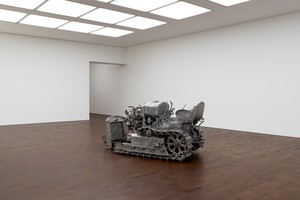
Installation view, Crushed, Cast, Constructed: Sculpture by John Chamberlain, Urs Fischer, and Charles Ray, Gagosian, Grosvenor Hill, London, June 15–July 31, 2020. Artwork © Charles Ray, courtesy Matthew Marks Gallery
Ray is an artist well-known for refashioning the familiar; his Tractor (2003–04) at first sight is a humble 1938 Cletrac machine that has been transported to the gallery. Closer inspection reveals that this sculpture is not all that it seems. When Ray stumbled upon the wreckage of a tractor in a San Fernando Valley backyard, he dragged the rusting carcass back to his studio and took it apart piece by piece. Instead of rebuilding the machine, Ray remade each of the tractor’s thousands of gears, springs, and components in aluminum and reassembled them into a newly imagined, gleaming whole: “A tractor in heaven,” Ray explains. “I would rename it Philosophical Object!”5
While Ray has decried the influence of Surrealism, it is impossible to deny the disquieting tension at the heart of Tractor between its meticulous process and surprising medium.6 Perhaps a paraphrase of Rene Magritte’s famous idiom best describes the work’s eerie simulation: “This is not a tractor, this is a picture of a tractor.”
The paradoxes that simmer beneath the surfaces of their works cannot be explained by rational means. Instead, we are asked to yield to the delights of the uncanny and to the “collision of things.”
Through his magnificently torqued hunks of automobile metal stripped from the bodies of Cadillacs and Oldsmobiles, John Chamberlain similarly interrogates the resonance of everyday objects. Recalling the conceptual charge of Marcel Duchamp’s readymade and the allure of the Surrealist “dream object,” Chamberlain stressed that his materials were “chosen. The idea is that there has been a lot of magic implied in the choice.”7 Between 1967 and 1969 Chamberlain chose to take a hiatus from cars and focus on the mesmeric properties of industrial galvanized steel, traditionally found in air-conditioning ducts. Using a compactor near his studio in New York City, Chamberlain crushed a series of steel boxes—some specially crafted and others purportedly donated by fellow artist Donald Judd, a champion of Chamberlain—into sinewy tangles of metal. At a glance, their playful medley of volume, void, and weight emulates the pliant folds of fabric. Much as Ray reimagined the form of a 1938 tractor, Chamberlain stripped the galvanized steel of its industrial origins, bending the material to his will and giving it new life as a work of art.
The proportions of the galvanized steel boxes and the decisive action of the compactor were inspired by heady nights at iconic New York watering hole the Cedar Tavern and later Max’s Kansas City, when Chamberlain would crush empty packs of Gauloises with his hand. Curator Klaus Kertess recalled the delight of other patrons: “There’s a memory of all of us sitting around Max’s Kansas City at night, waiting for John to finish a pack of cigarettes because when he crumpled it, he crumpled it like nobody else could.”8 During the 1960s, Chamberlain took to compressing other surprising materials with his bare hands, like aluminum foil and paper, working so quickly that he referred to the resulting works as his “instant sculptures.” Chamberlain explained, “I found that the particular principle of compression and wadding up or manipulating with the fingers, so to speak, whether you use a machine or not, has a lot of applications with a lot of different materials and I only use materials that deal with that. If it’s sexual, it’s squeezing and hugging. If it’s instinctive, it has to do with fit and balance. If it’s emotional, it’s presence. . .”9

John Chamberlain, Untitled, c. 1967, galvanized steel, 36 × 28 ½ × 27 ½ inches (91.4 × 72.4 × 69.9 cm), Cy Twombly Foundation © 2020 Fairweather & Fairweather LTD/Artists Rights Society (ARS), New York. Photo: Peter Schälchli, Zurich
Handling galvanized steel with the same apparent ease of paper in his palm, Chamberlain relished the spontaneous results of the compactor: “Whatever came out was what came out. Nothing has ever been premeditated.”10 Surrendering to the chance twists and curves of metal, Chamberlain’s practice echoes the automatic marks of the Surrealist pen or brush—a direct expression of the subconscious. The crash of the compactor can still almost be heard ringing in the air.
Mirroring Chamberlain’s cigarette boxes, Urs Fischer’s towering aluminum bodies Miss Satin, Zizi, and Ix (all 2006–08) began as small mounds of clay that the artist kneaded, pressed, and squeezed with his hand. Their tumultuous forms were then amplified and cast in aluminum. In the final works, the deep imprints of Fischer’s fingers and palms take on a spectacular scale that derides the coveted touch of the artist in art history. Like Chamberlain, Fischer harnesses the accidental blemishes of his process, explaining, “I make them fast, not thinking about composition . . . . It’s very raw.”11 Alive with movement, Fischer’s pulsating shapes seem in flux as they swell and recede, recalling the organic sculptures of Surrealist Jean Arp that were inspired by nature.
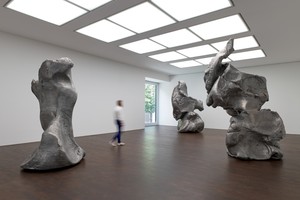
Installation view, Crushed, Cast, Constructed: Sculpture by John Chamberlain, Urs Fischer, and Charles Ray, Gagosian, Grosvenor Hill, London, June 15–July 31, 2020. Artwork © Urs Fischer
While the touch of the artist’s hand is perhaps more explicit in Fischer’s and Chamberlain’s sculptures, Ray’s Tractor is similarly defined by an ensemble of touches. Forged by ten studio assistants making molds and casting aluminum, the tractor emerged, shivering with potential.
Each of Fischer’s works in the exhibition is named for a pseudonym of Stéphane Mallarmé, taken from the poet’s idiosyncratic fashion magazine La dernière mode (The latest fashion, 1874)—the theater and book critic Ix, the fashion columnist Miss Satin, and the maid Zizi. Much like the silhouettes of the sculptures they inspired, Mallarmé’s noms de plume permit a fluid interpretation that is never anchored to a singular meaning. For the Surrealists, too, the illustrative power of words through automatic writing revealed the deeper truths of the subconscious. Chamberlain was equally fascinated by the resonance of language, playfully combining incongruent words to create titles evocative of a rich poetic syntax, developed during summers at Black Mountain College.
In their works in this exhibition, Chamberlain, Fischer, and Ray each engage in a careful dialogue with their chosen medium, questioning and responding to its qualities through a lyrical lexicon of the unexpected. The paradoxes that simmer beneath the surfaces of their works cannot be explained by rational means. Instead, we are asked to yield to the delights of the uncanny and to the “collision of things.”12
1 André Breton, Manifestoes of Surrealism, trans. R. Seaver and H. R. Lane (Ann Arbor: University of Michigan Press, 1972), p. 26.
2 Breton, pp. 37–38.
3 Isidore Lucien Ducasse, Les chants de Maldoror, in Oeuvres complètes, ed. Maurice Saillet (Paris: Livre de Poche, 1963), p. 322.
4 Breton, p. 263.
5 Charles Ray quoted in Andrei Pop, “Charles Ray,” Artforum, October 2014, p. 272.
6 Calvin Tomkins, “Meaning Machines: The Sculptures of Charles Ray,” New Yorker, May 11, 2015, https://www.newyorker.com/magazine/2015/05/11/meaning-machines.
7 John Chamberlain quoted in John Chamberlain: Choices, ed. Susan Davidson (New York: Solomon R. Guggenheim Museum, 2012), p. 18.
8 Klaus Kertess quoted in John Chamberlain: In Memoriam, ed. Kara Vander Weg (New York: Gagosian, 2012), p. 49.
9 John Chamberlain quoted in “Excerpts from a Conversation between Elizabeth C. Baker, John Chamberlain, Don Judd, and Diane Waldman, October 26, 1971,” in John Chamberlain: A Retrospective Exhibition, ed. Diane Waldman (New York: Solomon R. Guggenheim Foundation, 1971), p. 16.
10 Chamberlain quoted in Waldman, p. 20.
11 Calvin Tomkins, “The Imperfectionist: Urs Fischer’s Inspired Sloppiness,” New Yorker, October 19, 2009, https://www.newyorker.com/magazine/2009/10/19/the-imperfectionist-2.
12 “Artist Bio: Urs Fischer,” The Broad (website), https://www.thebroad.org/art/urs-fischer (accessed June 18, 2020).
Crushed, Cast, Constructed: Sculpture by John Chamberlain, Urs Fischer, and Charles Ray, Gagosian, Grosvenor Hill, London, June 15–July 31, 2020

Alice Godwin is a British writer, researcher, and editor based in Copenhagen. An art-history graduate from the University of Oxford and the Courtauld Institute of Art, she penned an essay for the exhibition catalogue Damien Hirst: Fact Paintings and Fact Sculptures and has contributed to publications including Wallpaper, Artforum, Frieze, and the Brooklyn Rail.
In this video, Urs Fischer elaborates on the creative process behind his public installation Wave, at Place Vendôme, Paris.

The Winter 2022 issue of Gagosian Quarterly is now available, featuring Anna Weyant’s Two Eileens (2022) on its cover.

Urs Fischer sits down with his friend the author and artist Eric Sanders to address the perfect viewer, the effects of marketing, and the limits of human understanding.
The exhibition Urs Fischer: Lovers at Museo Jumex, Mexico City, brings together works from international public and private collections as well as from the artist’s own archive, alongside new pieces made especially for the exhibition. To mark this momentous twenty-year survey, the artist sits down with the exhibition’s curator, Francesco Bonami, to discuss the installation.

On the eve of Awol Erizku’s exhibition in New York, he and Urs Fischer discuss what it means to be an image maker, the beauty of blurring genres, the fetishization of authorship, and their shared love for Los Angeles.

William Middleton traces the development of the new institution, examining the collaboration between the collector François Pinault and the architect Tadao Ando in revitalizing the historic space. Middleton also speaks with artists Tatiana Trouvé and Albert Oehlen about Pinault’s passion as a collector, and with the Bouroullec brothers, who created design features for the interiors and exteriors of the museum.

As spring approaches in the Northern Hemisphere, Sydney Stutterheim reflects on the iconography and symbolism of the season in art both past and present.
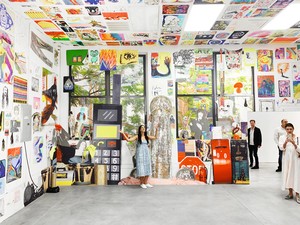
In his introduction to the catalogue for Urs Fischer’s exhibition The Lyrical and the Prosaic, at the Aïshti Foundation in Beirut, curator Massimiliano Gioni traces the material and conceptual tensions that reverberate throughout the artist’s paintings, sculptures, installations, and interventions.
Fruit and vegetables are a recurring motif in Urs Fischer’s visual vocabulary, introducing the dimension of time while elaborating on the art historical tradition of the vanitas. Here, curator Francesco Bonami traces this thread through the artist’s sculptures and paintings of the past two decades.
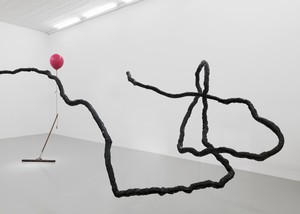
Urs Fischer talks about reading during the pandemic lockdown, sharing five books—both fiction and nonfiction—that he has turned to while in self-isolation.
Journalist and curator Judith Benhamou-Huet leads a tour of the exhibition Urs Fischer: Leo at Gagosian, Paris.
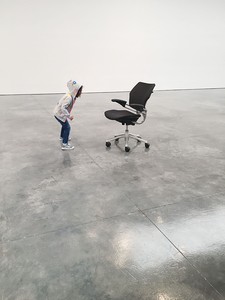
Urs Fischer and choreographer Madeline Hollander speak with novelist Natasha Stagg about the ways in which choreographic experimentation and an interest in our ability to project emotion onto objects led to the one-of-a-kind project PLAY.